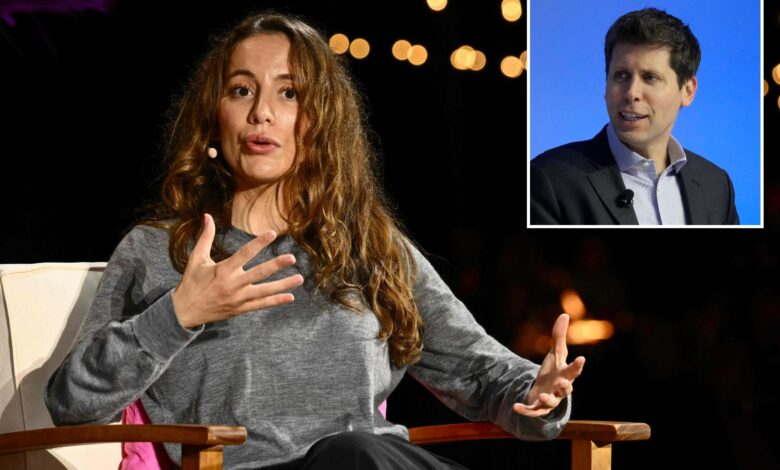Sam Altman plans to upend OpenAI’s nonprofit model — as another key executive exits

OpenAI is planning to restructure its business into a for-profit benefit corporation and give equity to CEO Sam Altman for the first time, the ChatGPT maker confirmed on Wednesday.
The move away from its current nonprofit model was revealed shortly after key Altman lieutenant Mira Murati abruptly announced her resignation as Chief Technology Officer — joining an exodus of executives in recent months.
Murati, 35, did not cite the plans to restructure as the reason for her departure.
A restructuring of its core business would mean that the San Francisco-based company will no longer be controlled by its non-profit board of directors, Reuters reported, citing people familiar with the decision.
The pivot is aimed at making OpenAI more attractive to outside investors.
Meanwhile, the nonprofit will continue to operate and will gain a minority ownership stake in the for-profit corporation.
The valuation of Altman’s stake was not immediately clear. The 38-year-old was worth at least $2 billion as of May, according to the Bloomberg Billionaires Index.
“We remain focused on building AI that benefits everyone, and we’re working with our board to ensure that we’re best positioned to succeed in our mission. The non-profit is core to our mission and will continue to exist,” an OpenAI spokesperson said in a statement to the outlet.
The Post reached out to OpenAI for comment.
OpenAI is reportedly pursing a fresh $6.5 billion funding round that would value the company at $150 billion. The round, which has yet to close, is being led by Thrive Capital, which has committed $1 billion.
Microsoft, Apple and Nvidia are also in talks to participate, according to the Wall Street Journal.
Murati had worked closely with Altman during nearly seven years at the Microsoft-backed firm. She briefly served as the company’s interim boss when he was forced out in a coup by ex-board members late last year.
“After much reflection, I have made the difficult decision to leave OpenAI,” Murati said in a message to staffers that she shared on X. “There’s never an ideal time to step away from a place one cherishes, yet this moment feels right.”
Murati added that she was “stepping away because I want to create the time and space to do my own exploration. For now, my primary focus is doing everything in my power to ensure a smooth transition, maintaining the momentum we’ve built.”
Altman posted a message thanking Mirati for her contributions on X.
“It’s hard to overstate how much Mira has meant to OpenAI, our mission, and to us all personally,” Altman said. “I feel tremendous gratitude towards her for what she has helped us build and accomplish, but I most of all feel personal gratitude towards her for the support and love during all the hard times.”
OpenAI will “say more about the transition plans soon,” Altman added.
Murati’s exit adds to the recent upheaval in the executive ranks at the pioneering AI company.
Co-founder Ilya Sutskever and key researcher Jan Leike resigned in May after OpenAI dissolved its so-called “Superalignment” team, which was responsible for ensuring the safe development of advanced AI.
Greg Brockman, OpenAI’s president and co-founder, said last month that he would take an extended leave of absence through the end of the year.
Another co-founder, John Schulman, jumped ship to take a position at OpenAI rival Anthropic.
OpenAI was originally founded as a nonprofit research entity in 2015, though it later established a for-profit subsidiary in 2019.
The unusual structure was set up to ensure the nonprofit could oversee OpenAI’s stated mission of creating safe artificial general intelligence – a term referring to AI with human-level or higher cognitive abilities – that would benefit humanity.
Some current and former OpenAI employees have accused Altman and his allies of putting progress in AI development ahead of safety considerations.
With Post wires




